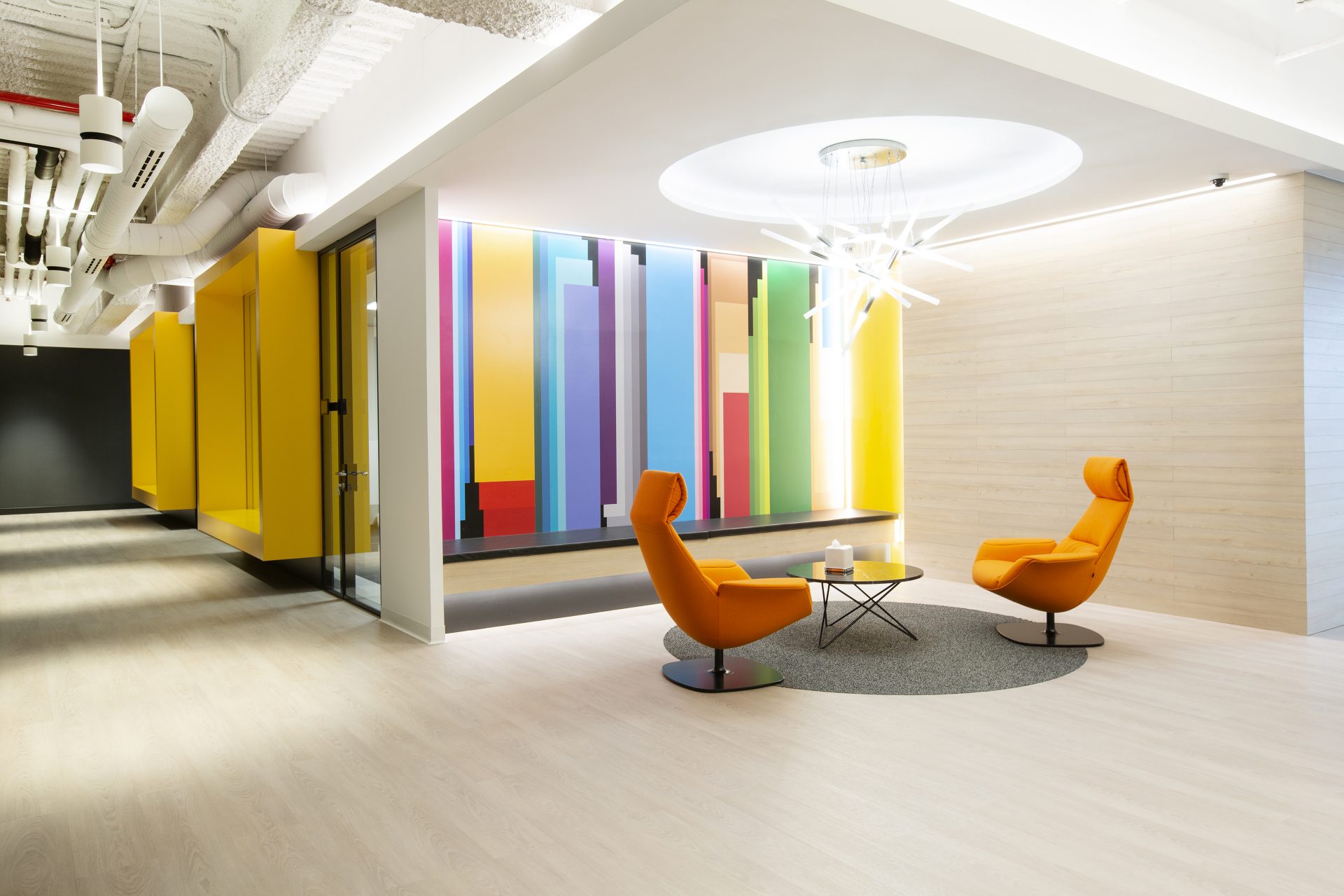
The offices of the future
There is no doubt that the post Covid-19 era has highlighted a need that was envisioned by many companies and organisations: to start designing the offices of the future.
The sudden and forced adoption of teleworking, the need for social distancing, increased ventilation and new work dynamics on the part of both employees and customers have brought about many changes in a very short time. This has prompted many businesses and organisations to rethink what their offices will look like in the not-too-distant future.
But what will these new workspaces look like? How do they adapt to new needs?
In many offices, this future has already arrived or is starting to be implemented. Dynamic open-plan spaces have been created where creativity and teamwork are encouraged.
Farewell to the permanent workstation
Mobility will be much greater and work will be more dynamic, with tasks being carried out on any device, anywhere in the office, and even outside of it.
Today, a lot of offices are still organised using partitions, ensuring some privacy from other employees. However, all this may soon disappear, even for managers.
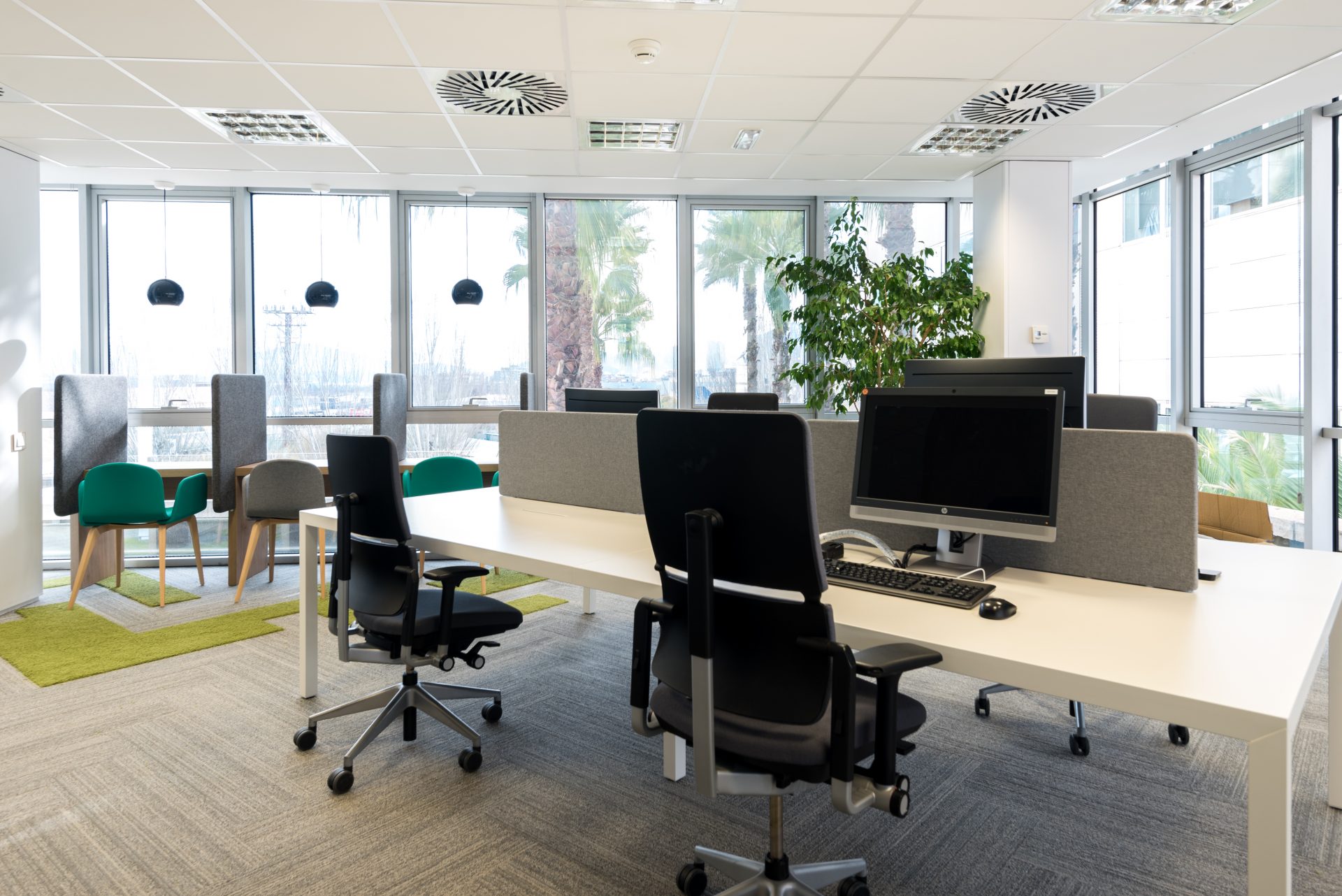
Almirall Offices – Barcelona Headquarters
At Almirall’s headquarters in Barcelona, in recent years we have been working on implementing what they call a ‘Flexible Workplace’, based not only on modernising the image of its offices, but also on a more flexible work arrangement that makes no distinction between ranks or job categories, in which the users have many different areas at their disposal in which to carry out tasks and meet, thus facilitating communication and cooperation between teams.
Open and casual spaces

QLIK Offices
The offices of the future will be open, bright spaces. In other words, they will be spaces where managers work together with the rest of their team, fostering closer and simpler communication.
In these new networking-enabled workplaces, the most important thing is the space for exchanging ideas.

OneCoWork Cathedral, 3rd floor
In the case of OneCoWork, spaces to interact with different users are fundamental. Casual areas with a homely feel were created to make coworkers feel at home. It is in these places that synergies and connections emerge, and where members of the same team develop the most innovative ideas.
The office kitchen, like the kitchen at home.

Veeva Systems
The kitchen will be a place designed to foster informal connections and collaborations between colleagues. As a result, it will become the informal hub of the company’s culture.
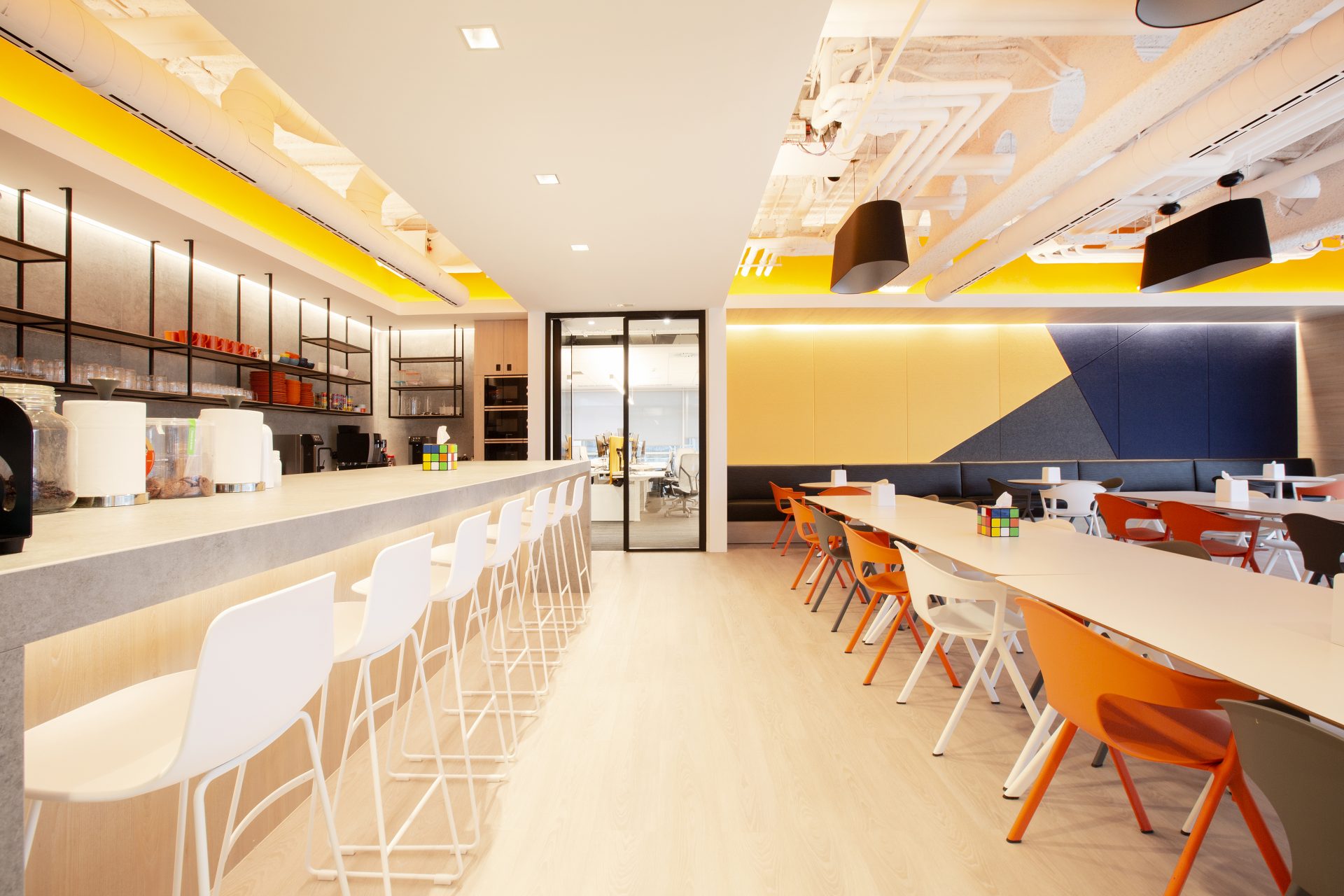
Veeva Systems
At Veeva Systems, the canteen was designed as the lungs of the office, with different types of spaces such as a high bar, tables with chairs or sofas. An area with lots of light and colour that allows workers to disconnect from their daily duties and take a break or even hold meetings with colleagues in a more relaxed area.
Biophilic design
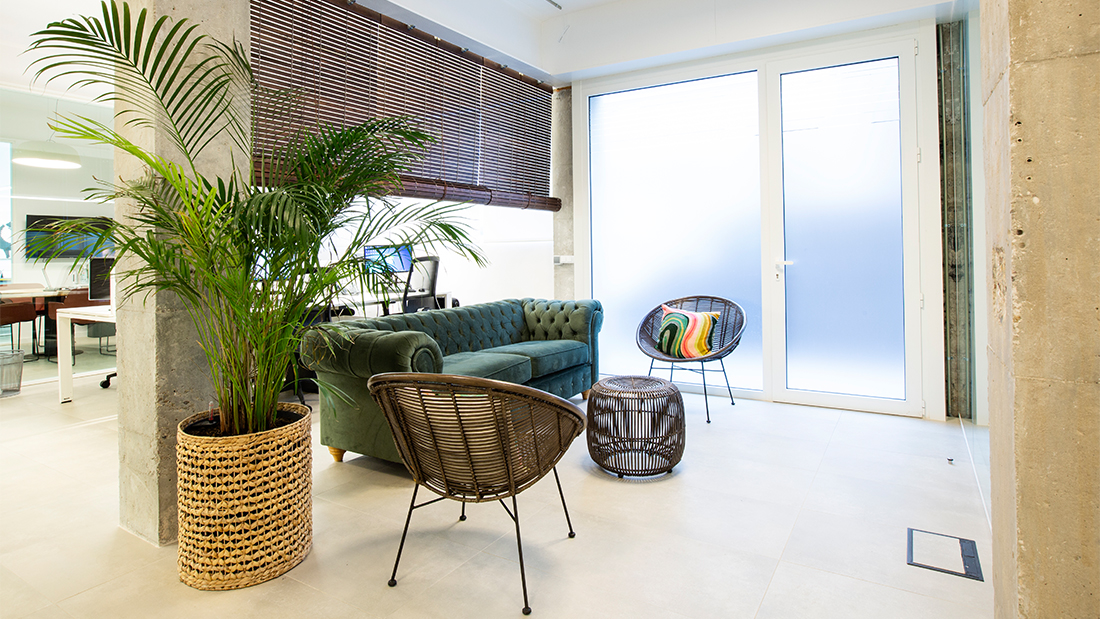
LD Facility Offices
Biophilic design involves incorporating aspects of nature into building construction and interior design. This is all done in order to reconnect people with nature that takes a back seat in urban areas.
This type of design promotes the well-being of workers, who feel in harmony with the environment around them. It brings positivity, tranquillity, calm and energy. This type of design also helps to boost productivity, as it keeps stress down and enhances creativity.
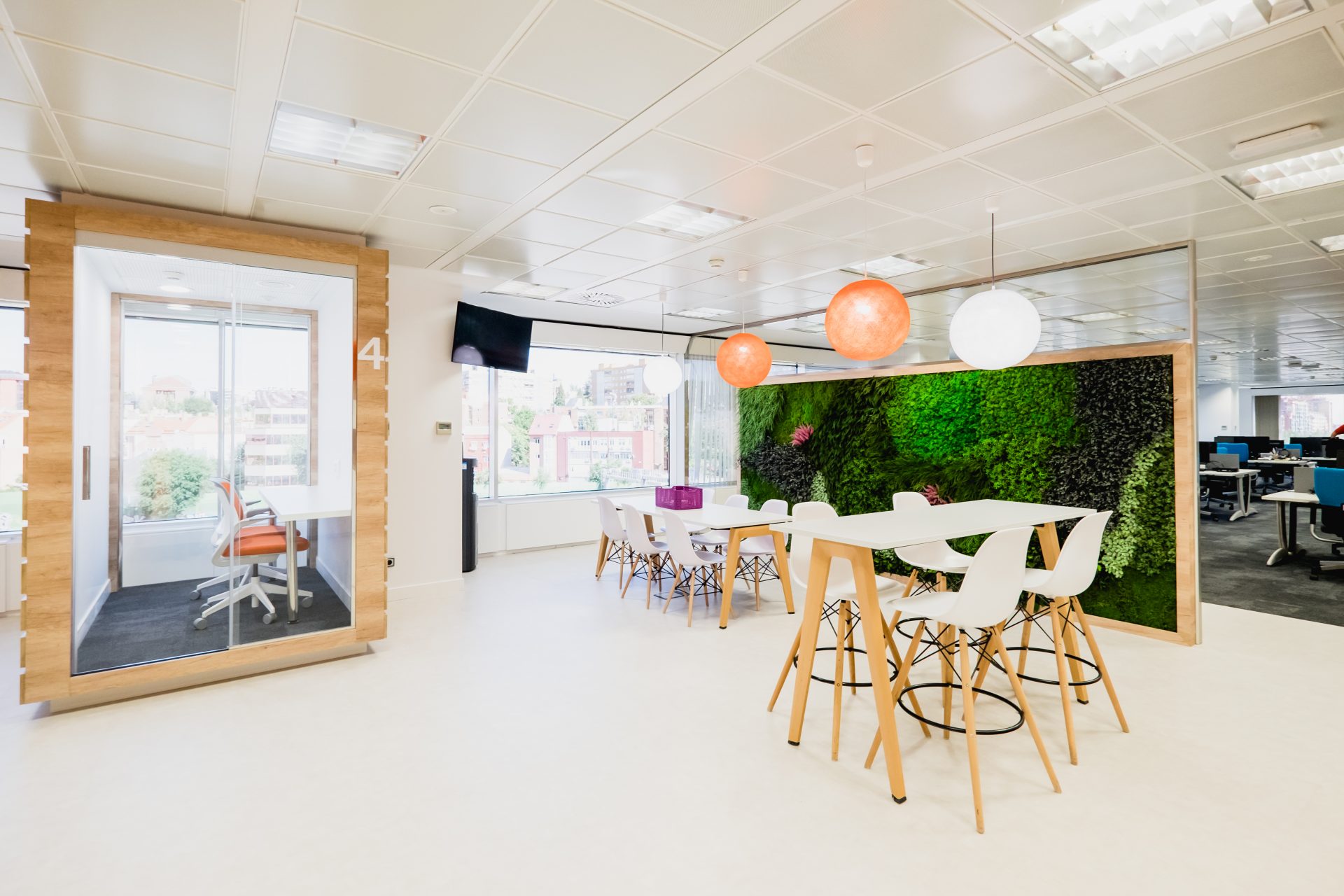
Mondelez Garden IV-Offices
For years now at Areazero we have attached great importance to the incorporation of plants and natural elements, such as wood, into our designs. Also materials that remind us of nature itself to bring the outdoors into our interiors.
In the Mondelez offices in Madrid, we included plant walls in the central area of each floor, where the ‘break area’ was located, and we created a garden in their dining area with wooden trees, freeze-dried plants and tables made in the shape of pallets.
Hybrid work
Hybrid work, combining remote and face-to-face work, is the future. New technologies, such as video calling, make communication much easier, but at the same time they mean a loss of contact and a hindrance to building relationships. This is why it is important to integrate teleworkers and provide spaces where face-to-face and remote work are fully compatible.

Gabriel Showroom
Video conferencing rooms are taking centre stage in this era where part of the workforce can work remotely. In the Gabriel Showroom in Barcelona, the main meeting room was set up to be able to connect with the rest of the team or clients off-site in certain cases.
As you have seen, times are changing and companies and organisations must adapt to them. At AreaZero 2.0 we are a multidisciplinary team with years of experience who employ a comprehensive methodology to assist both companies and organisations in this transition.




